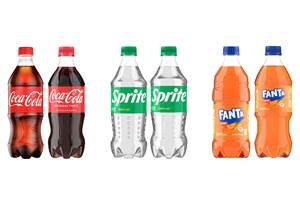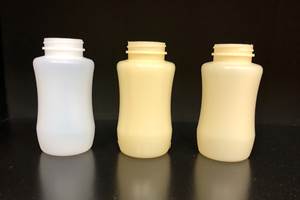Packaging Outlook: Moderate Growth in 2012
Our forecast for the U.S. market for plastics packaging in 2012 is positive, but the overall growth rate will be moderate by historical standards.
Our forecast for the U.S. market for plastics packaging in 2012 is positive, but the overall growth rate will be moderate by historical standards. This forecast is based on expectations for a slow recovery in the overall U.S. economy, with total GDP growth that starts out below its long-term potential and then gradually improves as the year progresses. We predict that real GDP will expand 2% to 3% next year, pushing the demand for packaging up by 3% to 5%.
The biggest markets for packaging are consumer non-durables, which include food, beverages, healthcare, household chemicals, and medical/pharmaceutical products. This category of expenditures is much less volatile than the consumer durables sector (autos, appliances, etc.), as many non-durables are necessities. Factors such as persistently high unemployment, slow income growth, and low consumer confidence in the coming quarters will constrain growth in spending for non-durables, but the overall growth will still be positive in 2012.
Growth in demand for plastics packaging has exceeded growth in spending for non-durables recently, and this trend will likely continue. Innovations in the design and manufacture of materials and products have resulted in lower production, shipping, and storage costs for many types of non-durables, and it has also created some totally new products.
Some other issues also confront plastics packaging processors. First is the price of resins. These follow the trend in crude oil prices, and once the global economy starts to recover, oil prices will most likey climb. High materials costs will be a problem for some processors in the short term.
A second problem facing this sector is the significant amount of unused capacity, which will make it hard to raise prices for packaging products even as demand and materials prices start to rise.
One final issue that is gaining momentum is concerns about perceived problems with health, the environment, and recycling/disposal of plastics packaging. Bag bans, plastics bottle de-selection, and conflicting stories about biodegradability and recyclability are having an effect on consumer demand for plastics products.
There are a couple of other long-term factors that will affect the packaging markets for years to come. The first is that the U.S. is the largest overall market for packaging products in terms of both total volume, per capita consumption, and more importantly, the annual number of launches of new packaging products, in which the U.S. leads by a wide margin. This last factor favors processors that are innovative, nimble, and always trying to solve problems.
The other long-term factor is the fast-growing packaging markets in developing nations like China, India, Russia, and Brazil. Because of the wide divergence in the types of climates, distribution, and access to refrigeration in these countries, many of the packaging products preferred by their burgeoning middle classes will be different from those used in the U.S.
WHAT THIS MEANS TO YOU
•Products that solve a problem, rather than merely make a profit, will be increasingly favored in the U.S.
•Prices for materials, food, chemicals, and energy paid by all manufacturers of packaging products and all consumers of non-durable goods will rise in the long-term.
•Issues concerning disposal, recycling, and re-use of packaging products and materials are still lurking. Once the economic recovery becomes better established, they will re-emerge.
Related Content
Coca-Cola’s Redesign of Small PET Bottles Pushes Lightweighting Below Prior ‘Floor’
Coca-Cola thought it had reached the limits of lightweighting for its small PET carbonated soft drink bottles. But a “complete redesign” led to a further 12% reduction.
Read MoreHow to Extrusion Blow Mold PHA/PLA Blends
You need to pay attention to the inherent characteristics of biopolymers PHA/PLA materials when setting process parameters to realize better and more consistent outcomes.
Read MoreThin, High-Performance Nylon/PE Barrier Film for Thermoformed Packaging
Südpack’s Multifol Extreme film is well suited for greasy, protein-rich and frozen foods
Read MoreMultilayer Solutions to Challenges in Blow Molding with PCR
For extrusion blow molders, challenges of price and availability of postconsumer recycled resins can be addressed with a variety of multilayer technologies, which also offer solutions to issues with color, processability, mechanical properties and chemical migration in PCR materials.
Read MoreRead Next
For PLASTICS' CEO Seaholm, NPE to Shine Light on Sustainability Successes
With advocacy, communication and sustainability as three main pillars, Seaholm leads a trade association to NPE that ‘is more active today than we have ever been.’
Read MorePeople 4.0 – How to Get Buy-In from Your Staff for Industry 4.0 Systems
Implementing a production monitoring system as the foundation of a ‘smart factory’ is about integrating people with new technology as much as it is about integrating machines and computers. Here are tips from a company that has gone through the process.
Read More







